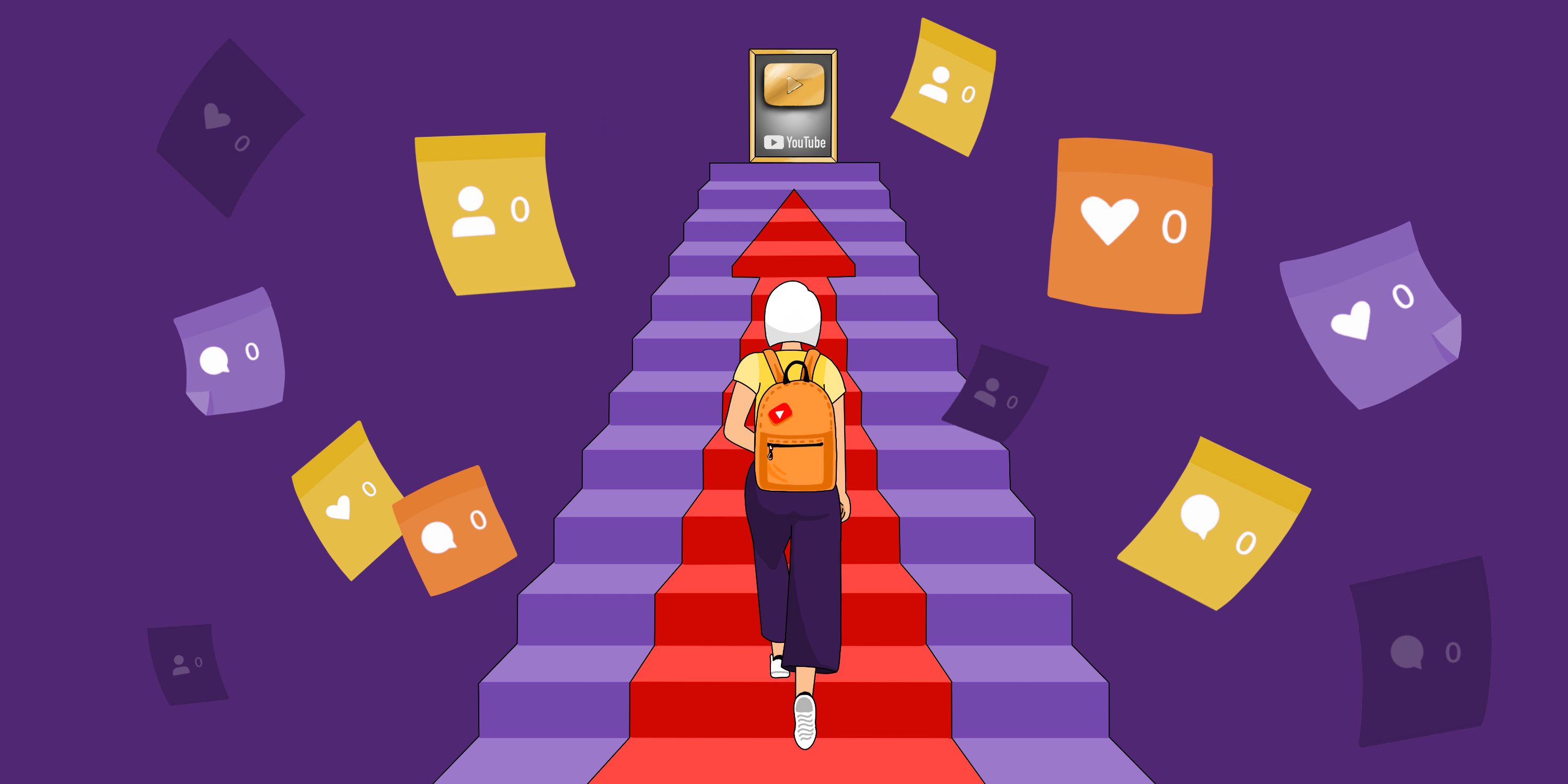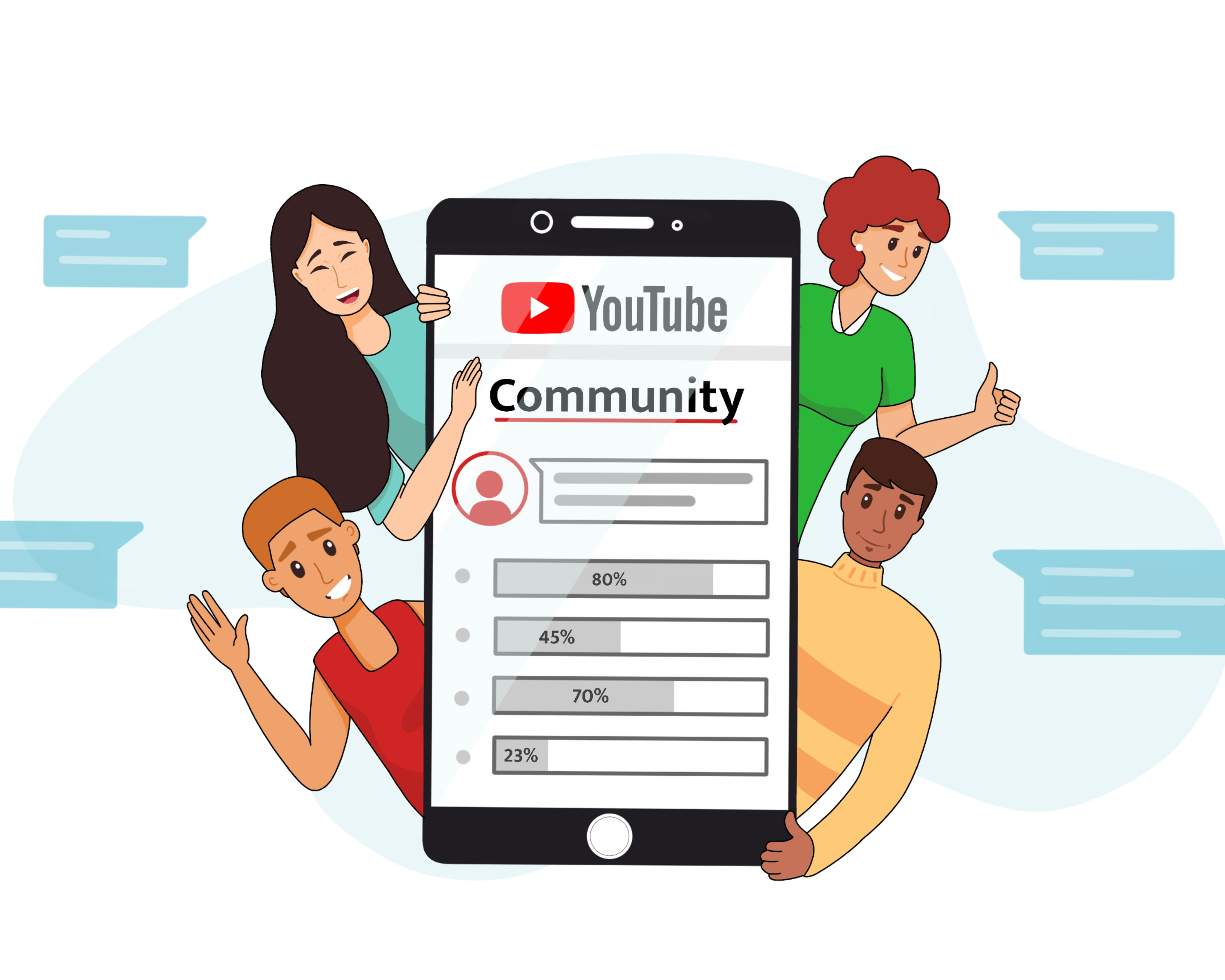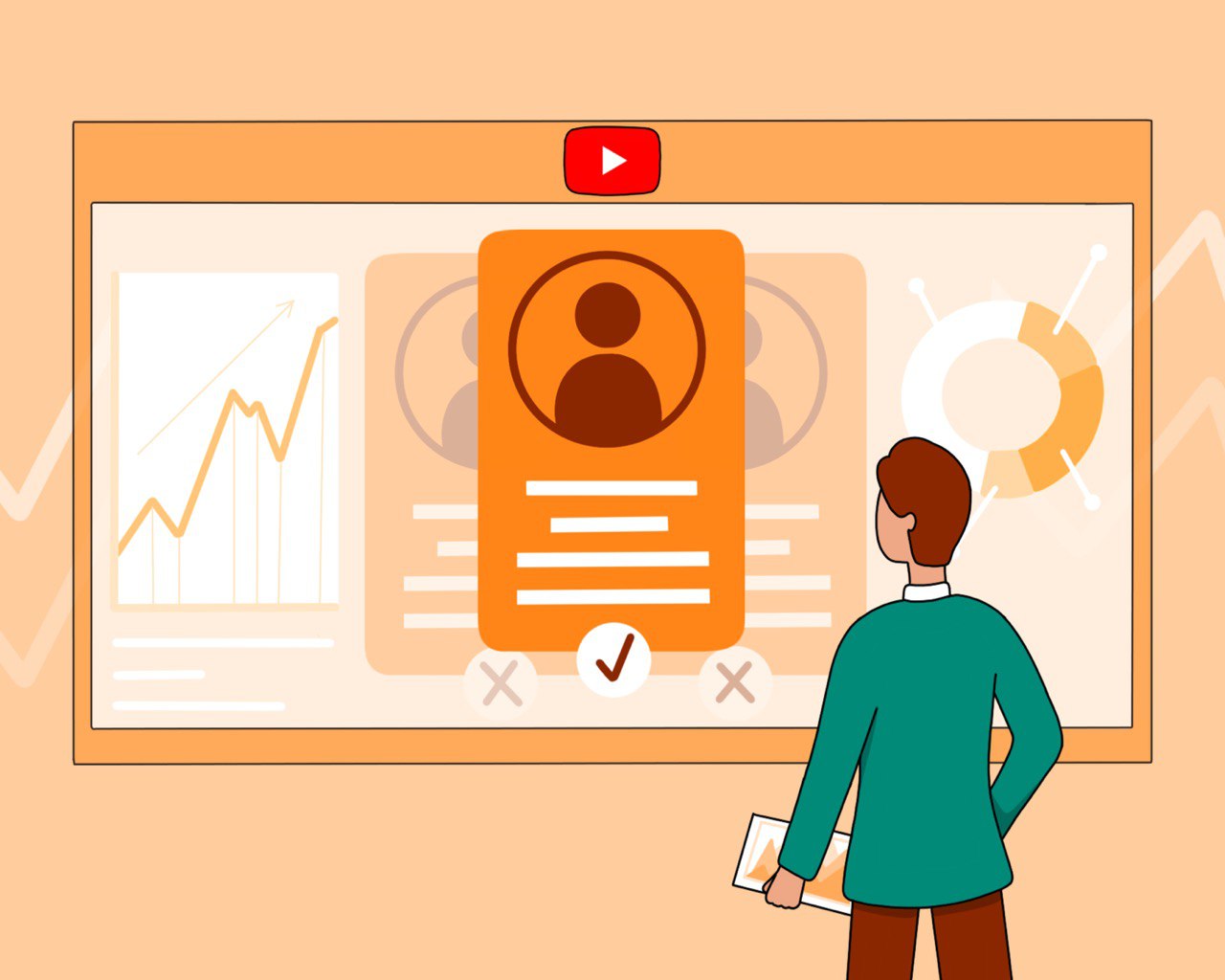How Failed Videos Can Fuel Growth for YouTube Creators

One key metric in YouTube's Creator Studio that can significantly impact a creator, if misunderstood, is the "Latest Video Performance." Many YouTubers may overlook it, but it’s essential to understand what this performance metric represents. Now is the perfect time to dive into its meaning.
The "Latest Video Performance" ranks your ten most recent uploads over a specific period. It’s essentially a performance ranking of those videos, with positions ranging from first to tenth.
In other words, if your video ranks 1st out of 10, it means it performed the best among your recent uploads. Conversely, if it ranks 10th out of 10, it indicates that this video performed the poorest compared to the others.
What can cause a tenth place in the ranking?
- Your video topic was not intriguing.
Yes, this happens to everyone. No one is immune to mistakes, and it would be hypocritical for any creator to claim they’ve never had failures. Don’t pay attention to such claims—everyone makes mistakes, without exception.
- The video is not relevant to the audience at the moment.
Perhaps your viewers are not very interested in your topic right now. Maybe you were explaining how to bake a delicious pie, but it's so hot outside that people only want to think about ice cream. But this doesn't mean that as autumn approaches, viewers won't want to return to this video.
- An experiment, something new that has not been done before
If you're aiming for creative growth, sooner or later you'll start trying something new. New segments, topics, editing styles, location changes, and so on.
And there's a chance that not every idea of yours will be met with great enthusiasm. But, again, if you're confident that these experiments are necessary for you, then go for it!
But let's return to our “Latest video performance” metric.
First, don’t treat this ranking as the ultimate judgment of your content. Since rankings fluctuate, checking Creator Studio every hour could show your video rising or falling.
Even if it’s currently ranked 10th, that doesn’t mean it will stay there forever.
Second, a 10th place ranking doesn’t mean the video is bad or should be deleted or hidden. It simply means that, at this moment, the video isn’t resonating with viewers' interests.
Third, YouTube has even considered removing this metric. During a time when there was heightened concern about the mental health of creators and viewers, YouTube took steps like hiding likes and dislikes. This was done to minimize the impact of numbers on both audience choices and creator motivation.
In the end, YouTube only hid dislikes, but viewers voted against hiding likes and the performance parameter. That's why we still have this block in Analytics.
So now that we understand the reasons why a video might end up at the bottom of the ranking, let's figure out how we can bring it back to life.
A failed video is not a problem
Experimenting and testing different formats is one of the most useful activities you can take on YouTube.
For example, if you've never appeared on camera before and primarily used animation or stock images, but suddenly decided to show yourself, viewers might not immediately recognize that the video is from your channel.
On the flip side, if you shift focus to a character from a video game, movie, or TV show instead of yourself, your audience may also fail to realize the content is yours.
To reach a wider target audience, sometimes you need to experiment with elements like thumbnails, channel design, and editing styles that may be atypical for your channel. While these innovations might not be immediately embraced by your current subscribers—who are used to your usual format—these changes can be necessary if the influx of new viewers has slowed or if you're aiming to expand your audience.
Now, back to the videos themselves. Every video has potential, even if it doesn't seem like it right away.
That leads to the first rule: never delete videos from your channel.
Below are two good reasons to keep your current videos:
- They may turn out to be evergreen content
Evergreen videos, unlike trend-based ones that fade when new trends emerge, maintain their relevance throughout the seasons and over the years. They consistently attract views and new viewers. However, there’s a key nuance: an evergreen video may not gain traction right away but can deliver significant results over time.
- You will be removing watchtime
No matter how many views a video has, each one contributes to your overall statistics, especially when you're just starting out.
Every minute a viewer spends on your content matters.
In other words, when you delete a video, you're also erasing all the metrics it accumulated—likes, comments, clicks, views, and more. If you find a video particularly embarrassing, consider hiding it instead. No one but you can see it in Creator Studio, so there’s no need to worry.
Over time, you might even change your opinion about that "unsuccessful" video. It could become relevant again, or you might realize the work isn’t as bad as you thought.
To avoid the urge to delete or hide videos, it’s important to prevent that situation in the first place. This means taking the time upfront to ensure you’ve done everything possible.
So, before posting a video, take a look at the thumbnail and title and ask yourself: Do they clearly convey what the video is about?
If everything is overly veiled, abstract, and vague - the viewer will either not click, or will click but skip the video very quickly because their expectations, which you created with the design, weren't met.
Always remember the golden rule:
YouTube doesn't promote your videos, it's in the business of delivering content to viewers.
So you should think of working on YouTube as a kind of conveyor belt with Elves making candies for a holiday. Your job is to make a quality product that can be sent to the customer.
The product is your video, the customer is the viewer. Santa Claus is YouTube, who evaluates the quality of the product and decides - will these candies go on sale or are they defective?
So you, dear creators, should do everything possible so that kind old Santa - YouTube - doesn't reject your video, but delivers it to viewers.
However, it's perfectly fine if you don’t always hit the mark with new viewers' interests.
Sometimes, it happens like this: a viewer enjoys a variety of handmade crafts—woodworking, beaded jewelry, and crocheting Pokémon figures. YouTube notices these broad interests and suggests an origami tutorial. But when the viewer sees it, they think, I hate working with paper.
In this scenario, you’ve done everything right. There’s nothing wrong with your content—it’s like offering a perfectly good candy, but the customer simply prefers apple flavor, and they were given orange.
Of course, you can’t completely avoid situations like this. That’s when you need to rely on an important quality—patience. It’s difficult, especially after tasting success. Maybe a few videos gained decent views, comments, and likes, and then suddenly, there’s a lull.
But this is normal. You won’t always hit the mark and produce content that consistently goes viral.
So how does this all work?
- First, the video reaches your viewers: subscribers, regular audience, and those who have watched something on your channel before.
- Then it is shown to random viewers who might be interested in the video: they could have been searching for something related to the topic or watched videos from competitors in your niche.
This is your audience base: the old ones plus the new ones.
But if you notice that the metrics aren’t growing over, say, a week or longer, and new viewers aren’t coming in, then it’s worth considering changing the title or thumbnail of the specific video that’s not getting views. Try again, ask yourself the questions we discussed earlier, put yourself in the viewer’s shoes, and think about what thumbnail would attract you and what title you would click on without hesitation.
Also, keep an eye on retention. If it’s above 50%, then you’re on the right track.
And overall, don’t be afraid to make mistakes and stick to the rule: it’s better to try and not get results than to sit in the dark wondering whether the video would have taken off or not.
There’s one interesting trick. It helps creators who feel uncertain about a particular video.
- Pick the topic you need and find popular videos on it.
- Watch what thumbnails and titles other creators are using.
- Identify the connections and differences, and take notes for yourself.
- Select 4-5 videos and watch them from start to finish.
- Determine what unifies their editing, script, and style.
- Take all your observations and use them in your own video, adding a little more information or elaborating on certain concepts a bit further.
This approach might not work one hundred percent for you, because we can't guarantee which videos you'll end up watching or how narrow your topic might be—there are many factors.
But by simply trying, you won’t lose anything and might even gain some new viewers. Start analyzing both your own content and that of others to identify potential mistakes, areas where you didn’t push hard enough, or instances where you may have gone overboard. Most importantly, don’t be afraid to experiment—experimentation is key to attracting new audiences.
Habits to help you stay resilient and never give up
Many YouTube creators face negative experiences, leading them to focus more on the platform’s drawbacks than its advantages. They feel algorithms push their videos aside, suspect shadow bans, and believe that success requires significant financial investment. Despite these frustrations, it’s crucial to maintain a realistic perspective, even when things feel disappointing, frustrating, or uncertain. The following habits will help you overcome your doubts and foster a growth mindset.
- Habit number 1: Ignore negative people
How can you cultivate a mindset for growth and development when you're constantly bombarded with complaints about how unfair and difficult everything is? It’s undeniably demotivating.
At one point, a Reddit user shared their struggles:
It’s great that this person opened up and shared their feelings. They were likely seeking comfort, maybe even some helpful advice. Unfortunately, many of the responses came from other creators who were also losing their motivation and inspiration, unsure of why they were still running their channels. While it’s reassuring to know you're not alone, there needs to be something more—something productive and actionable.
Surround yourself with people who aren’t afraid to take risks, who are passionate about their ideas and goals. These individuals radiate energy, and thoughts like "I’m tired, nobody likes me" won’t even cross your mind. Instead, there will be only one thought: "I’m tired, but I’m determined to keep going and do more."
Take a look at one of the comments that truly offers hope, showing that creative and motivated individuals are still out there:
'You need to enjoy the process and have fun. If you’re just grinding away hoping to become a YouTube star, it’s going to be really hard to keep going. I had to put out about twenty videos in two months before I started getting views, and even then, it was only around three hundred or four hundred. Now, seven months later, I have a few videos that have taken off and brought me over a thousand subscribers, but I wouldn’t have achieved this if I had given up. The algorithm needs some time to find your target audience, and it will have an easier time doing so if you keep feeding it data—meaning, if you keep making videos. You just need to be persistent.'
That’s why it’s important to focus on the positives. The journey of a YouTuber, blogger, or anyone striving for success is never easy, and that’s something we all must accept.
To embrace this reality, it's essential to study the experiences of other creators and focus on what you can do to grow on YouTube more quickly and effectively.
- Habit number 2: Think about your original purpose for creating your channel
When you feel like giving up, remind yourself why you started. What made you get out of bed, sit at your computer, and create your YouTube channel in the first place?
Ideally, you should set this goal even before launching your channel, so that in moments of discouragement, you can think: "I can't quit—I don’t have the right to—because I've always wanted to..." and let that drive you forward.
YouTube expert, Sean Cannell, shared what led him to content creation. At that time, he was young, earning very little, and his wife was diagnosed with serious health issues. That was the trigger that brought him to YouTube.
It might sound silly, like, why didn’t he just go get a job at a factory if things were that bad? But each of us has our own set of skills and knowledge, and at that time, Sean already had experience running channels—he was helping his church grow through YouTube. Besides, he needed to find a job that would allow him to stay close to his wife as much as possible.
'And I thought: "Okay, what if I could start making money not for fame and fortune, but to pay medical bills and, you know, start working from home."'
No one is saying that everyone must have a deeply personal or profound goal. For example, Sean was simply looking for ways to support his wife and be by her side. Each time, those very responsibilities motivated him to keep going, not to give up, even when things were tough.
Many years later, Sean is no longer just a guy desperately trying to help his wife—he’s now the CEO of Think Media, a leading media agency, and one of the top YouTube experts in the world.
So, if you set a clear, specific goal that holds deep personal meaning, giving up won’t be an option. You'll either need to find an alternative solution and start fresh, or continue moving in the direction you’ve already set.
- Habit number 3: Keep releasing videos
As we’ve already established, some videos may take off and appeal to your audience, prompting them to explore your other, even older and less popular, content. For example, if you're a fan of true crime, podcasts on social issues, game lore analysis, or anything else, you probably let these videos play in the background while you eat or clean. One video leads to another, and YouTube continues recommending them to you.
As a result, even the less successful videos of your favorite creators will get watched, signaling to the algorithm that they’re still engaging. This, in turn, tells YouTube that these videos are worth showing to more viewers.
So, don’t get discouraged if a video doesn’t take off right away.
First, imagine that with every video you upload, your skills improve by just one percent. That might seem insignificant, but if you upload consistently—say, once a week for a year—that one percent improvement adds up to fifty percent growth in just a year. Sounds a lot more encouraging, doesn’t it?
Take the example of MrBeast.
The most popular YouTuber with 300 million subscribers started with the silliest challenges, like counting to 10,000 or watching a music video for 10 hours straight.
He tried out a huge variety of formats—from let's plays to giving money to strangers—and finally found what truly engages viewers: various challenges and experiments in an interesting and high-budget format. It took MrBeast 12 years to go from zero to 300 million subscribers. So sooner or later, you too will find your target audience. Even what seems like the most unsuccessful video might bring you great popularity.
On the same Reddit thread, another creator shared their results:
However, we don’t necessarily have to agree with that last statement. It’s definitely worth trying to replicate your success—in fact, it’s essential.
However, everyone’s path is unique. The key is to continuously analyze and monitor your metrics, as there’s no universal formula for success.
Create a video, analyze it, and then move on to the next one. You will learn through the accumulation of experience. Don’t be afraid of change and experimentation. Even if you make mistakes, even if part of your audience drops off, even if you face criticism—keep going. This is your experience. You won’t understand what the audience wants and what you can offer them without trying.
And don’t think you’re alone on this path. Even YouTube giants are still interested in finding new audiences and are still working on figuring out how to reach them.
Take MrBeast as an example. It might seem like he has nothing to worry about—he’s already the most popular creator on YouTube. He could just post anything and still get views and subscribers, right? But that’s not the case. His team works tirelessly, creating multiple thumbnails for each video, constantly searching for the best possible content. Being the most popular isn’t enough—you can’t just maintain that position without continuous effort, especially when everyone else is vying for the top spot.
So, friends, keep working hard, analyzing your audience, honing your skills, and improving the quality of your content. This applies to everyone, from beginners to the most famous YouTubers. The key is to view every mistake as an opportunity for growth and never give in to fear. We believe in you!




